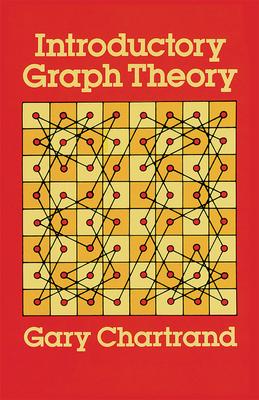Graph theory is used today in the physical sciences, social sciences, computer science, and other areas. Introductory Graph Theory presents a nontechnical introduction to this exciting field in a clear, lively, and informative style.
Author Gary Chartrand covers the important elementary topics of graph theory and its applications. In addition, he presents a large variety of proofs designed to strengthen mathematical techniques and offers challenging opportunities to have fun with mathematics.
Ten major topics -- profusely illustrated -- include: Mathematical Models, Elementary Concepts of Graph Theory, Transportation Problems, Connection Problems, Party Problems, Digraphs and Mathematical Models, Games and Puzzles, Graphs and Social Psychology, Planar Graphs and Coloring Problems, and Graphs and Other Mathematics.
A useful Appendix covers Sets, Relations, Functions, and Proofs, and a section devoted to exercises -- with answers, hints, and solutions -- is especially valuable to anyone encountering graph theory for the first time.
Undergraduate mathematics students at every level, puzzlists, and mathematical hobbyists will find well-organized coverage of the fundamentals of graph theory in this highly readable and thoroughly enjoyable book.

Graph theory is used today in the physical sciences, social sciences, computer science, and other areas. Introductory Graph Theory presents a nontechnical introduction to this exciting field in a clear, lively, and informative style.
Author Gary Chartrand covers the important elementary topics of graph theory and its applications. In addition, he presents a large variety of proofs designed to strengthen mathematical techniques and offers challenging opportunities to have fun with mathematics.
Ten major topics -- profusely illustrated -- include: Mathematical Models, Elementary Concepts of Graph Theory, Transportation Problems, Connection Problems, Party Problems, Digraphs and Mathematical Models, Games and Puzzles, Graphs and Social Psychology, Planar Graphs and Coloring Problems, and Graphs and Other Mathematics.
A useful Appendix covers Sets, Relations, Functions, and Proofs, and a section devoted to exercises -- with answers, hints, and solutions -- is especially valuable to anyone encountering graph theory for the first time.
Undergraduate mathematics students at every level, puzzlists, and mathematical hobbyists will find well-organized coverage of the fundamentals of graph theory in this highly readable and thoroughly enjoyable book.